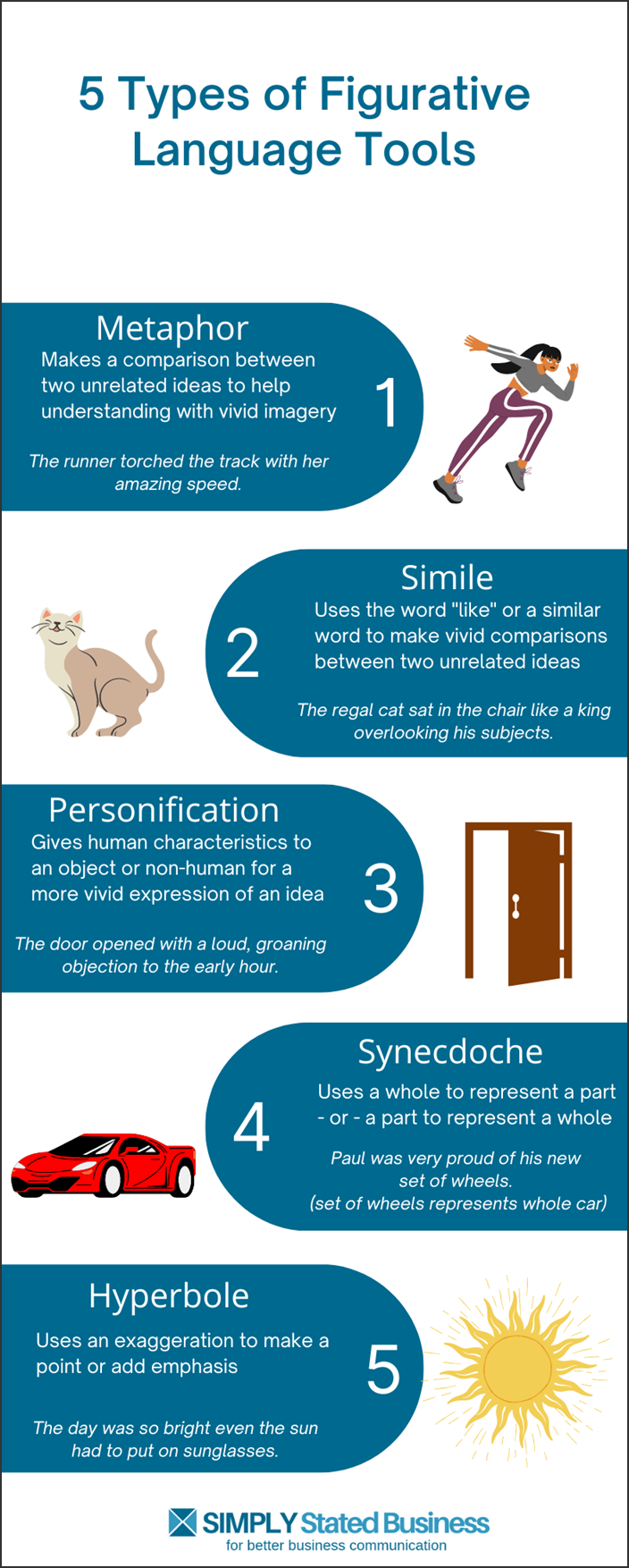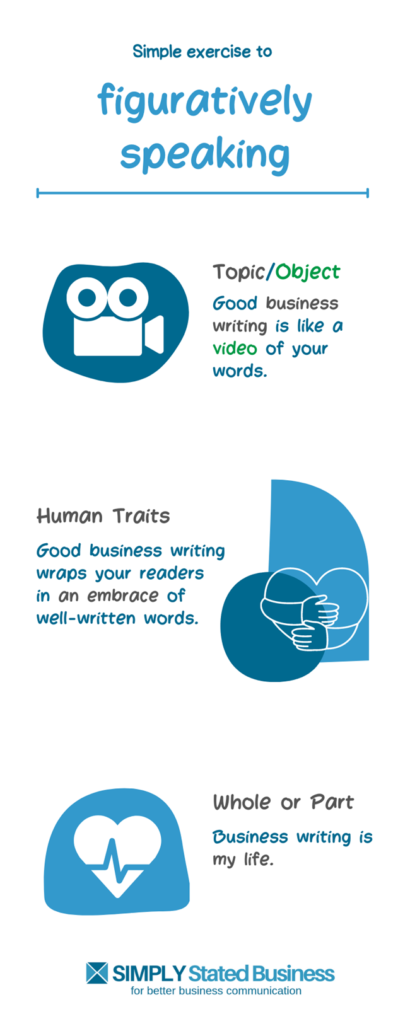 Business writing is a barbed wire trap (figuratively speaking). Although to some readers (and writers), the pain is real.
Business writing is a barbed wire trap (figuratively speaking). Although to some readers (and writers), the pain is real.
You navigate a field filled with typos, grammar gremlins, and the dreaded boring. Boring may be the deadliest of them all.
Blast boring by figuratively speaking your way to better business communication.
Figuratively Speaking
The trouble with business writing is its rigid tendencies. Even the figurative language tool sounds like a dreary lesson buried in rules and funny-sounding words.
Do you remember studying figurative language in school?
- I mean, come on.
- Why are there so many different types?
- And how are you supposed to remember them all?
My advice? Don’t.
Instead embrace the fun part of creating figurative language. Who cares if you mistake a metaphor for a simile (or is it the other way around)?
For those of you who like the details, the illustration below is a quick recap of common types. Depending on where you look, you’ll find a dozen or more types. I kept this list to five.

Figuring it Out
The point is not the names of the figures of speech, but the jolt of creativity. In business writing, the use of stories and figurative language creates visual imagery for your readers.
Figurative language produces interesting, easy to understand, and memorable business writing. So, let’s look at ways you can start figuratively speaking.
Keep it Simple
Have you ever watched a presentation where the creators went nuts with the animation (like the one illustrated below)?
Using too many figurative expressions is like animation gone wild. Instead of bedazzling your audience, you distract them from your message and may tick off a reader or two.
- So, use discretion with figurative language.
- It’s okay to sprinkle your business writing with them.
- Just make sure the saltshaker top does not pop off and bury your message.
Example:
Metaphor Mayhem – Figurative language helps business writing leap off the page from a blackened sky of anonymity to dance on a brighter stage.
Keep it simple – Figurative language is like a shooting star racing across a blackened sky of monotony.
 Keep it Clear
Keep it Clear
Figurative language that does not make sense to the reader blurs the picture you are trying to create.
For example, mixed metaphors combine multiple metaphors, often creating confusing and sometimes hysterical results. Probably not the result you are looking for.
- Not many of us can get away with creating confusing figures of speech.
- We leave that honor for Yogi Berra – the master of fun confusion.
Keep it Uniquely Yours
Overused business words duel with worn-out analogies and other clichéd phrases as our most hated language.
- Think outside the box.
- Grab the low-hanging fruit.
- That’s not in our wheelhouse.
- Push the envelope.
- Run it up the flagpole.
Developing your own figurative language helps set your business writing apart. Used consistently, it reflects your personality and what’s unique about you and your business.
Figuratively Speaking – Repeatedly

Repetition creates habit (or what I like to refer to as second nature). If you struggle to tap into that creative sprite for better business writing, try this simple exercise.
- Jot down topics.
- Compare your topic to an object.
- Give your topic human traits.
- Use your topic to describe a whole or a part.
Let’s give it a shot. Using the topic business writing, the following are a few examples to get you started.

Now, you try it. Share your favorite figures of speech. I promise you, once you start; it’s a sweet-tasting addiction.
==================================
Note: original post published on September 22, 2010. This July 3, 2022 post updates it.
===================================

0 Comments